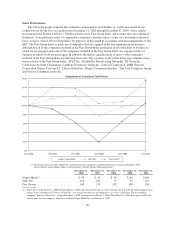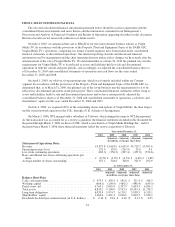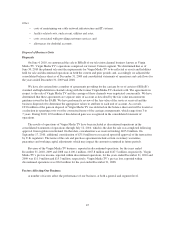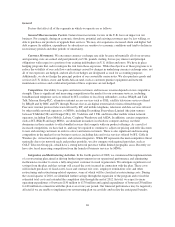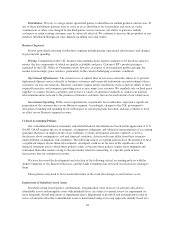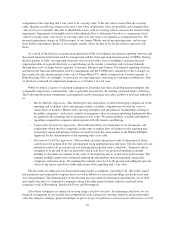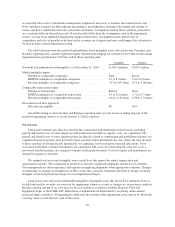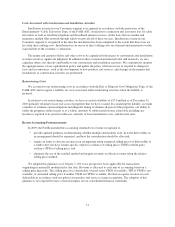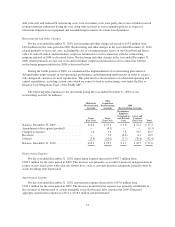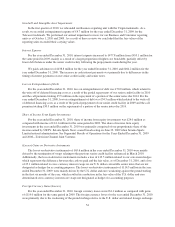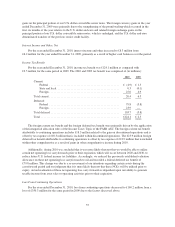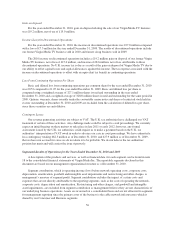Virgin Media 2010 Annual Report Download - page 51
Download and view the complete annual report
Please find page 51 of the 2010 Virgin Media annual report below. You can navigate through the pages in the report by either clicking on the pages listed below, or by using the keyword search tool below to find specific information within the annual report.Distribution. We rely, to a large extent, upon third parties to distribute our mobile products and services. If
any of these distribution partners were to cease to act as distributors for our products and services, or the
commissions or other costs charged by the third parties were to increase, our ability to gain new mobile
customers or retain existing customers may be adversely affected. We continue to increase the proportion of our
products distributed through our own channels including our retail outlets.
Business Segment
Factors particularly affecting our Business segment include pricing, operational effectiveness and changes
in government spending.
Pricing. Competition in the U.K. business telecommunications market continues to be based on value for
money, the key components of which are quality, reliability and price. Certain of BT’s product pricing is
regulated by the U.K. Office of Communications; however, in respect of non-regulated product pricing, the
market is increasingly price sensitive, particularly in the current challenging economic conditions.
Operational Effectiveness. The extensive use of optical fiber in our access networks allows us to provide
high-speed ethernet services directly to business customers and to provide nationwide area networking to these
customers via our core networks. Business customers require timely installation services and our ability to meet
required timescales and commence providing services may impact our revenues. We regularly rely on third-party
suppliers to connect business customers and we have a variety of alternative methods to connect our national
telecommunications network to the premises of business customers that are located outside of our cabled areas.
Government Spending. Public sector organizations, in particular local authorities, represent a significant
proportion of the customer base in our Business segment. Accordingly, changes to the U.K. government’s
allocation of funding and spending levels with respect to certain programs have had, and may continue to have,
an effect on our Business segment revenue.
Critical Accounting Policies
Our consolidated financial statements and related financial information are based on the application of U.S.
GAAP. GAAP requires the use of estimates, assumptions, judgments and subjective interpretations of accounting
principles that have an impact on the assets, liabilities, revenue and expense amounts reported, as well as
disclosures about contingencies, risk and financial condition. Actual results may differ from these estimates
under different assumptions and conditions. The following critical accounting policies have the potential to have
a significant impact on our financial statements. An impact could occur because of the significance of the
financial statement item to which these policies relate, or because these policies require more judgment and
estimation than other matters owing to the uncertainty related to measuring, at a specific point in time,
transactions that are continuous in nature.
We have discussed the development and selection of the following critical accounting policies with the
Audit Committee of our Board of Directors, and the Audit Committee has reviewed our disclosures relating to
them.
These policies may need to be revised in the future in the event that changes to our business occur.
Impairment of Indefinite-Lived Assets
Goodwill arising from business combinations, reorganization value in excess of amounts allocable to
identifiable assets and intangible assets with indefinite lives, are subject to annual review for impairment (or
more frequently should indications of impairment arise). Impairment of goodwill and reorganization value in
excess of amounts allocable to identifiable assets is determined using a two-step approach, initially based on a
48




